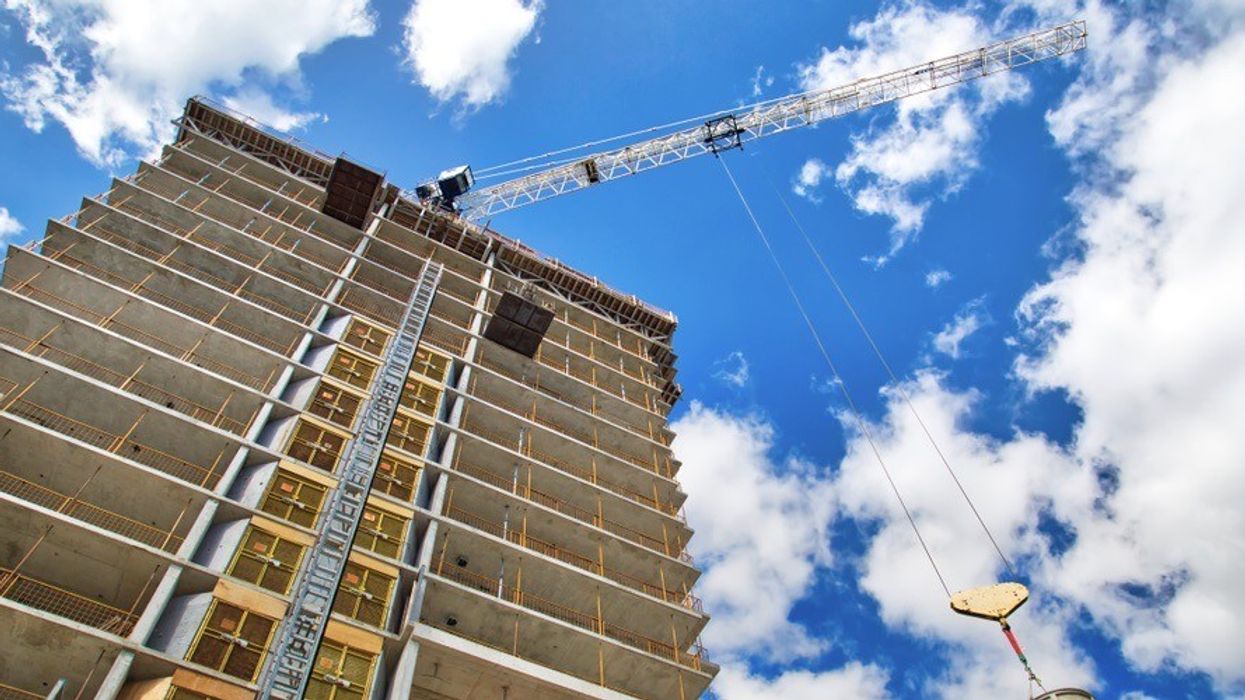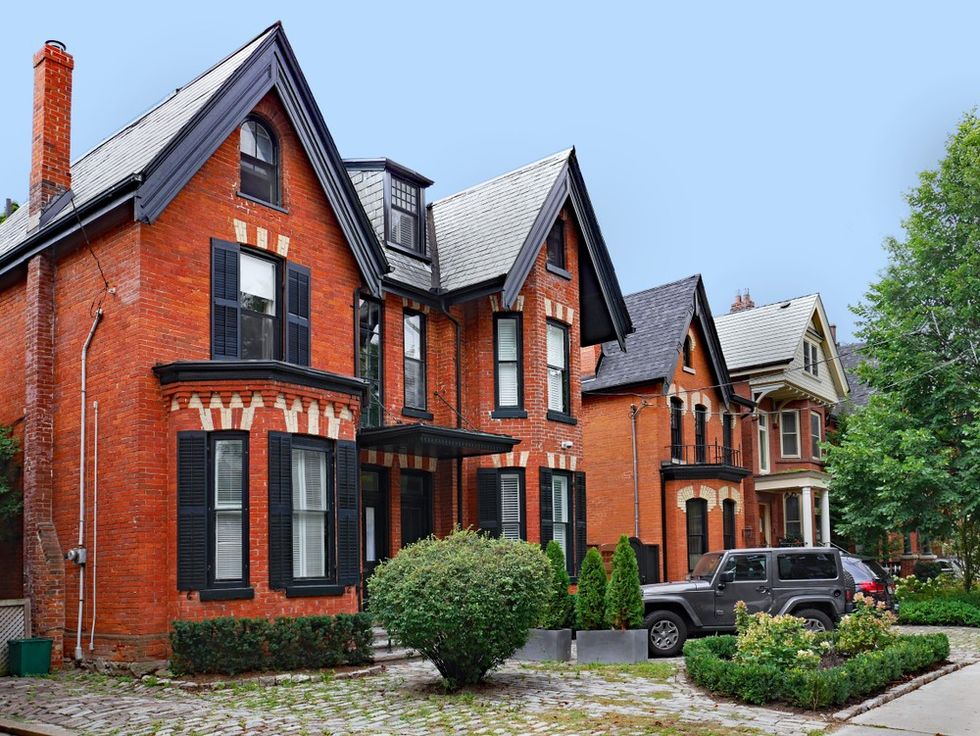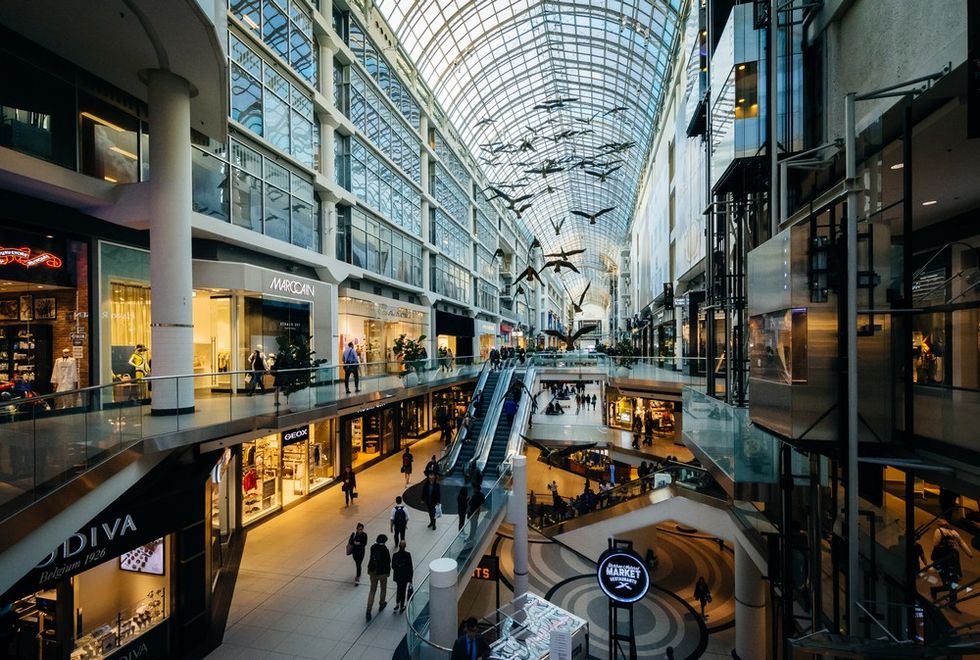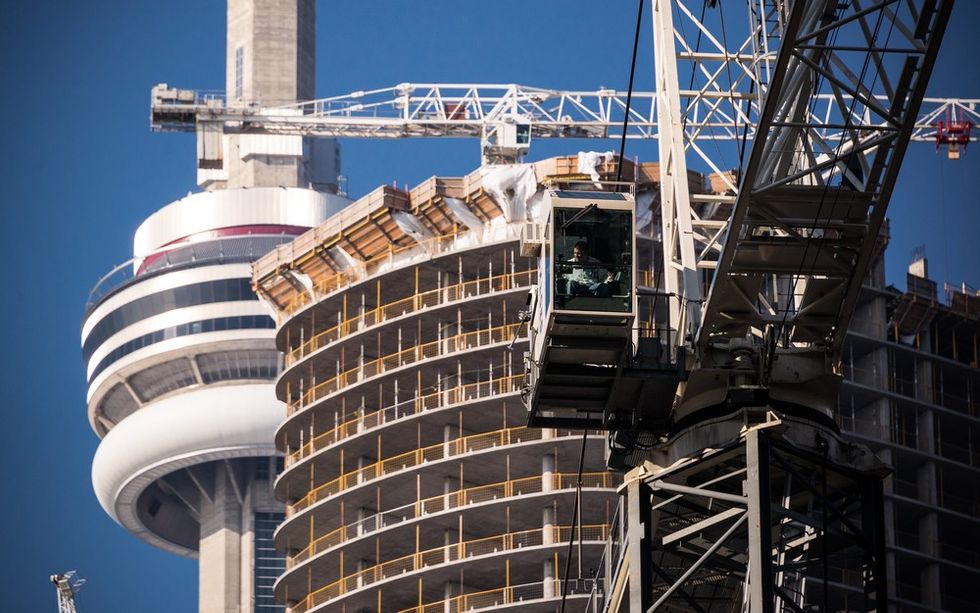The real estate sector, like most other industries, had to turn on a dime to cope with the pandemic completely disrupting how business was done. But, in the months since, many of those early best practices have now simply become the (new) way things are done, and in the meantime, some innovations have also appeared.
As the country, and especially the Toronto area, copes with a second wave, here are several ways the industry is working to keep employees, clients, members of the public, and tenants safe as COVID-19 continues to dominate everyone’s daily lives.
Builders: Keeping Job Sites Safe
“Early on, the construction sector was designated an essential service,” says David Wilkes, president and CEO of the Building Industry and Land Development Association (BILD).
“We had a responsibility to keep work sites maintained … with the health and safety of workers in mind.”
With the guidance of the provincial Ministry of Labour, the building industry instituted sign-in logs, regular cleansing of washrooms and other communal sites, and staggering the trades on site to have fewer people working together, Wilkes says. These practices have continued through to today.
In terms of renovations, builders work with homeowners to schedule visits and log the tradespeople on site, Wilkes says, and there are separate washrooms and regular cleaning of work areas, with cleaning logs to ensure customers and workers are protected.
One of the key aspects of keeping people safe on job sites is keeping track of them.
A company that saw a solution for this is Ryan Design International, whose partners created a Safety Portal product.
“It all started … around my dining room table. Clients were wondering how to keep track of people on job sites” in a no-touch way, says Linda O’Connor, CEO and partner at the real-estate marketing company.
Normally, staff would go to the construction trailer and fill out paperwork, she says. The electronic product, Safety First, has portals for different situations: trades entering a building, staff entering an office, homeowners before a service appointment or in-person appointments. It not only has the advantage of being no-touch, but also provides email or text prompts if someone forgets to sign out, O’Connor says.
READ: Toronto Construction Company Launches Anti-Racism Campaign
“At the beginning of the pandemic, when the government … announced the construction industry was an essential service … it caused some real concern from our perspective,” says Patrick Dillon, the business manager of the Provincial Building and Construction Trades Council of Ontario.
“None of us understood … what the virus was and how it was transmitted.”
As the industry started putting protocols in place to keep workers safe on work sites, they realized it was an opportunity to fix washroom facilities and personal hygiene supplies, “which had been lacking prior to Covid,” he says. The organization is working to make sure “the old norm doesn’t come back.”
Physical distancing has been a bit of a challenge,” says Dillon, but measures like limiting industrial elevators to four people and wearing masks or shields if working closely together aim to make it safer.
Once built, homes need to be sold, but tramping through a property in a crowd is pretty much out.
Sales: Seeking a Home Safely
“From the beginning of this pandemic we have been urging members to switch to virtual tools," says Ontario Real Estate Association (OREA) president Sean Morrison.
Both OREA and the Toronto Regional Real Estate Board (TRREB) are backing a provincial ban on in-person open houses.
“We see things like virtual tours, 3-D mapping technology, even VR (virtual reality) space,” says Morrison. “Anyone with a set of VR glasses can walk through the home virtually.”
OREA gathered survey data throughout the pandemic that suggested 40% of people are willing to do most of the real-estate process digitally, he says. “That would have been much lower before the pandemic.”
For scheduled in-person showings, there are protocols aimed at keeping people safe. These include asking everyone to self-screen, placing a limit on time visitors spend inside a property and only allowing a certain number of people inside homes, says Morrison.
“We would suggest monitoring that flow based on the property,” he adds. “Ten people in a 600-square-foot condo doesn’t allow adequate social distancing.”
READ: Ask An Agent: What Are You Advising Homebuyers To Do During the Second Wave?
Agents contact people who own a home before a showing or at the time of listing to find out if anyone has had contact with someone who has tested positive or if they have had an active test beforehand.
“We are advising our members to consider having personal protective equipment (PPE) outside the residence … or just inside the door for showings,” says Morrison. This includes disposable masks and possibly gloves. Agents enforce no-touching rules, make sure interior doors and cupboards and electrical panels are open, lights are on and surfaces are disinfected, he adds.
Airflow becomes trickier as we head into colder weather, he says, and open windows are no longer a possibility. “As much as possible … having adequate airflow assists with not transmitting the virus.”
As of July, the province allowed real estate documents to be signed electronically. “We have digital tools available to every realtor… that allows them to do contactless signing through an e-signature platform.”
For those still using “wet signatures” (in-person signing), realtors try and make sure clients have their own pens, are wearing masks and are in an area where they can adequately social distance but still sign documents. “If you are handing (documents) over to another realtor, we advise you putting them into a clear envelope… so they don’t have to interact with those surfaces.”
For multi-tenanted properties like condos, realtors should be checking with management to see if there are any COVID protocols in the building, such as limits on the number of people in elevators, or if elevators need to be booked.
Maintaining properties, especially multi-tenanted rental ones, means property managers juggle keeping people safe with maintaining buildings.
Rental: Living Together Safely
In the beginning, there was a lot of uncertainty with respect to what the virus meant and how it would impact people, so we took a conservative approach and closed our head office and regional offices,” says Jonathan Fleischer, executive vice-president of operations for CAPREIT, which manages thousands of rental buildings in Canada and abroad.
The company started by closing rental offices in buildings to all visitors, however the offices were staffed by site employees on a rotational basis who were available by phone or email, Fleischer says.
They provided “massive amounts” of PPE for employees, and as rental offices reopened to visitors, limited the number of residents who could go into offices, and installed plexiglass screens where required.
CAPREIT then developed procedures so emergency maintenance could be done in ways to keep employees, contractors and tenants as safe as possible. This included screening questions and requesting tenants be in different rooms while work was being done.
Coincidentally, CAPREIT had just begun a roll-out of a tenant portal a few months before lockdown, which it accelerated due to the pandemic, Fleischer says.
Normally, employees and tenants would have had in-person training. But because of the pandemic, the company had to develop ways to continue the roll-out remotely.
READ: Average Rent Across All Property Types in the GTA Down 12.9% Annually
CAPREIT also put in place such processes as posting educational signs about hand washing, distancing and elevator occupancy. But as new information came from public health agencies, for instance when masks were recognized as helpful, the marketing department created new posters, old ones came down and new ones were put up.
They also increased cleaning frequency in high-touch areas, such as elevator buttons. They closed amenities such as gyms and pools, and put in sanitation stations in lobbies for disinfecting hands.
They also trained staff on how to handle situations when residents did not comply with requirements, though Fleischer says there were not many incidents like that.
“The problem with pandemics is they are very infrequent… and hard to plan for.” For instance, CAPREIT had budgeted for PPE in buildings because of the earlier SARS pandemic, but it turned out not to be enough because the scale of this one is so much bigger.
Malls: Shopping Made Safer
Once malls got the green light to reopen after the spring lockdown, Cadillac Fairview Corp. Ltd. put in place a number of processes to keep staff and shoppers safe, says John Massey, vice-president of operations for the Ontario portfolio of the company.
This included directional signage, which aims to move people in one direction to ease crowding, and signs reminding people to wear masks. They also added sanitization stations and overnight cleaning of high-touch surfaces for both the public and workers, such as those using freight elevators.
The company uses technology to monitor traffic so that when a threshold is reached, such as 80% of a safe number of people, the company is alerted. They also check for density at a certain location, for instance if here are too many people in front of a store that is having an event.
READ: Canada Reveals Ambitious New Immigration Plan to Stimulate Post-Pandemic Recovery
Cadillac Fairview also developed technology to allow retailers to book appointments with customers, to cut down on bottlenecks. They have done other things, like reserving certain parking spots for curbside pickup, eliminating food court seating and closing off every other bathroom stall.
In terms of air filtration, “Where possible, we have converted to higher filtration systems,” Massey says.
Cadillac Fairview also added staff to answer questions from the public and hand out face masks.
While sometimes members of the public do not comply with public-health requirements, staff take more of an educational than confrontational approach, Massey says. “We have had very little resistance,” he adds. Security and guest services staff have received training on how to approach people in a gentle, welcoming way, while still being direct about requirements like wearing a mask.
The New Normal
Over the months of the pandemic, people have become more used to a new way of living and doing business, those in the industry are saying. And beyond behavioural changes, the pandemic “forced a technology shift in the industry that I think will be with us for a while,” OREA’s Morrison says.
Let's just hope the pandemic doesn't continue to be with us for a while.























